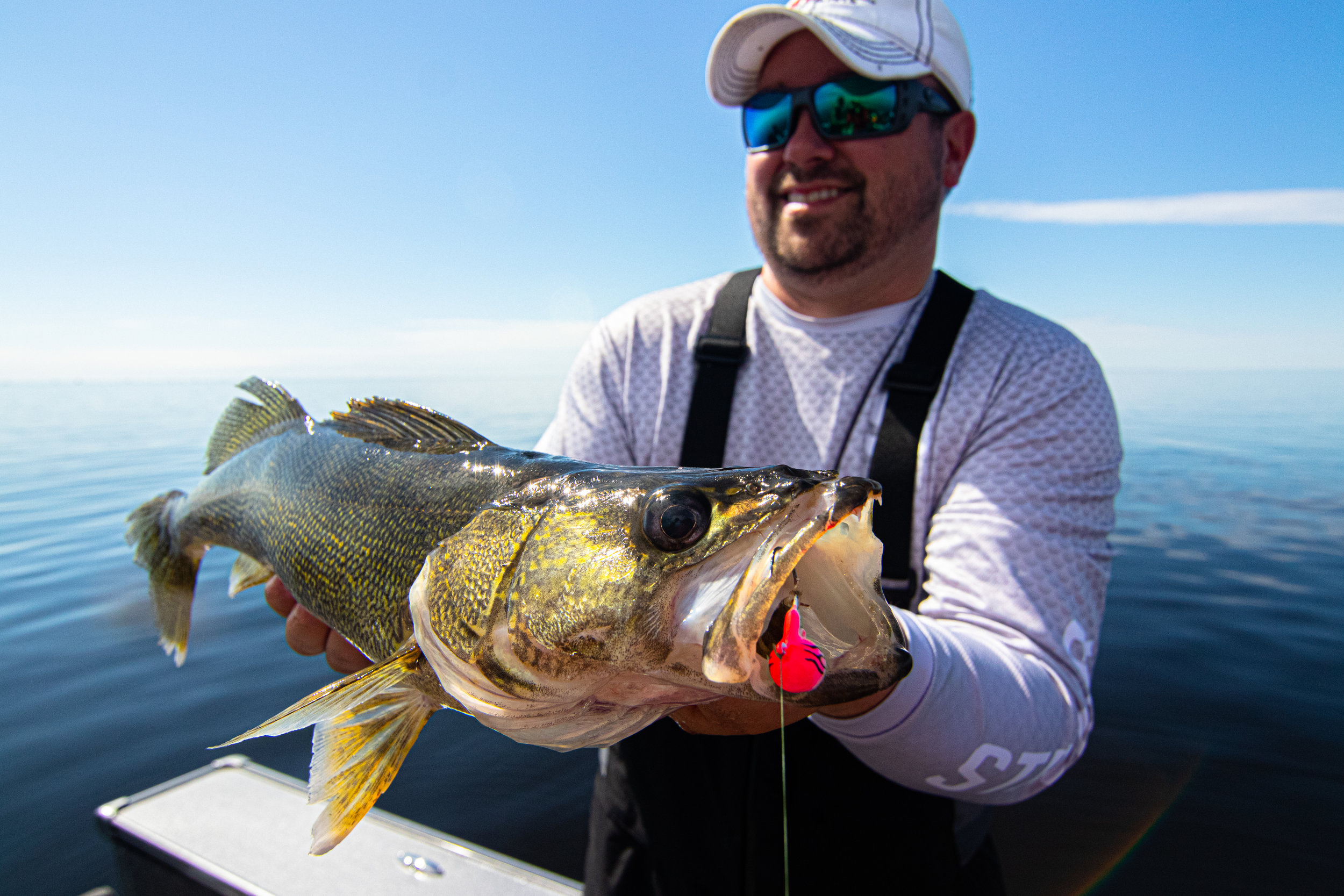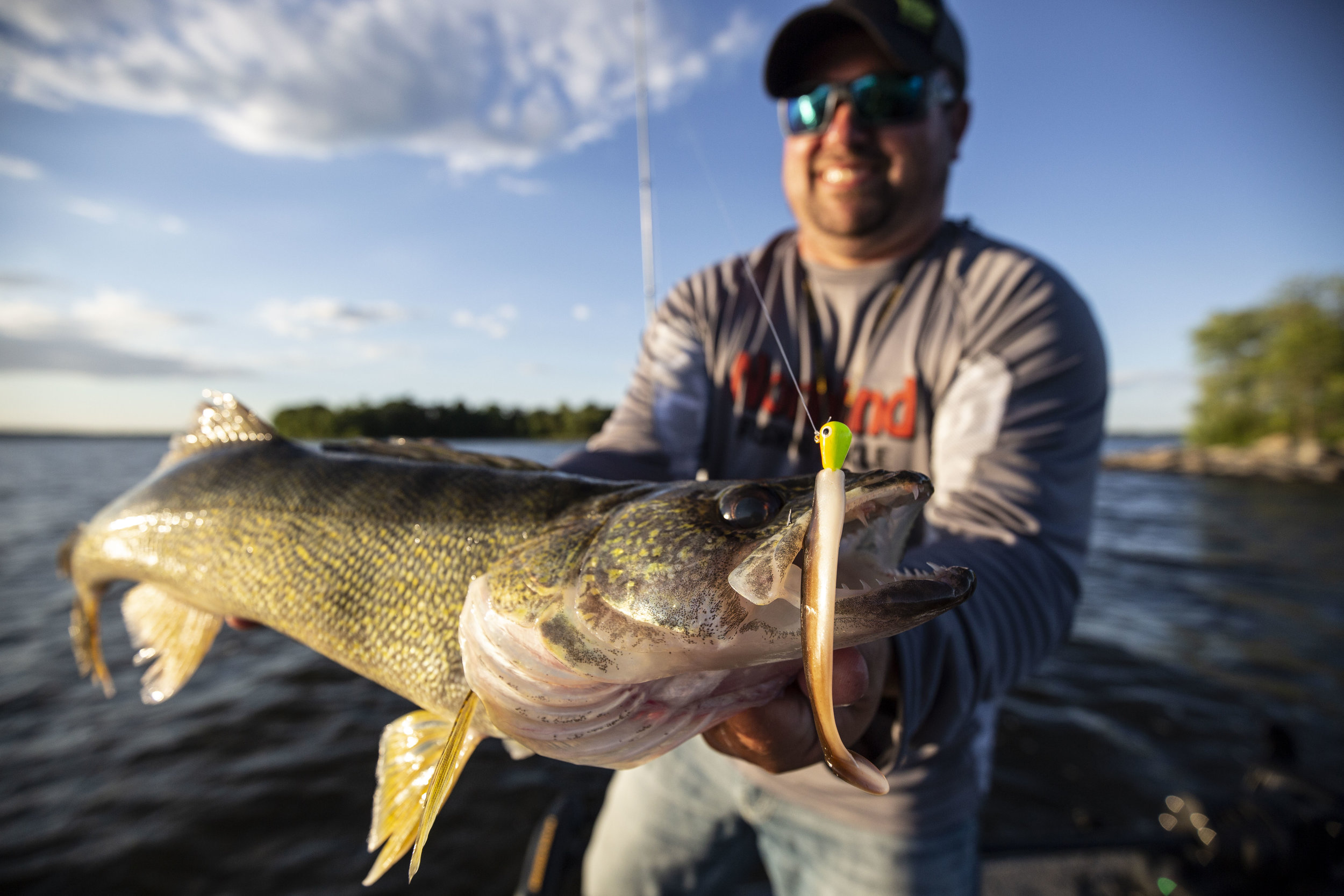Walleyes spend the better part of their summer season in deep water. Provided there’s enough oxygen at depth, they happily enjoy cooler water temperatures and the bevy of bugs and other bait that congregate on deep structure. Older fish in certain lakes, learn to key in on larger bait stock. That could mean ciscoes and whitefish, or suckers and even bullheads or rough fish depending on where you’re fishing. That still puts them deep, maybe coming up occasionally to feed before sinking back down.
Depth however is a relative term, depending on the lake you’re fishing. On Minnesota’s Upper Red Lake, 10 feet of water and deeper is considered quite deep. The same is true in the prairie pothole region where there’s plenty of great little walleye holes that never make even 20 feet. Then again, there’s great walleye lakes like Vermillion, where walleyes can be found in excess of 50 feet of water. Of course, your favorite walleye lake may be at either end, or anywhere in between.
While the depth of walleyes may be relative to the system in which they live, their ability to survive summer capture at those various depths is not. Most fish caught in 30+ feet of water will likely die as the result if water temps are at their peak. Brandon Eder, Assistant Area Fisheries Supervisor for the MN DNR’s Waterville Office confirmed this in a recent conversation while adding, “No matter how slowly you reel in fish from that depth, there’s still likely going to be some trauma.”
Throughout the walleye-belt then, there’s plenty of catch and release fishing that might as well be catch and kill. Not that there’s anything wrong with eating a walleye either. I love ‘em, and prepare them a bunch of different ways. However, there are plenty of lakes that mandate release of walleyes a certain size, and anglers should know some ins and outs of how depth can affect the release of walleyes during the summer. Eder suggests, “Be prepared to keep your first 6 fish regardless of size (depending on the regs) and then quit or go shallow.”
There’s a pile of factors that influence walleye mortality, with depth of capture being only one of them. Hooking method, or how deeply into its mouth a walleye eats the bait is a big influencer, as is the use of live bait vs. artificials, but those are often related. Water temperature is another factor, and warmer temps see fish that simply don’t release as well and survive. It’s why catch and release walleye tournaments aren’t held as often in the deep summer, and why you should consider eating the fish you catch when water temps are the hottest of the year. Extended or prolonged handling of a fish outside of the water is yet another factor that affects mortality.
Many of those factors an angler can directly influence, especially in the summer as you can’t control the water temp. Without switching away from live-bait, circle hooks vs “J”-hooks, and pinching down all barbs, what’s a catch and release angler to do? The answer is to change the depth at which you’re fishing, and to know what depths are likely lethal, and which are not.
Barotrauma is a big word with a relatively simple meaning, especially as it pertains to walleyes caught at depth. It affects all living things, but with walleyes swimming rapidly from deep water, it refers to physical injuries caused by water pressure. Quick ascent means a swelling air bladder, which can push their stomachs out, bulge their eyes, and ultimately cause deadly injury. Releasing those fish at the surface, in extremely warm water may make the angler feel good as they swim away, but may not lead to survival.
One solution to the problem of fish barotrauma has been “fizzing” – the act of releasing that pressure with an accurately placed hypodermic needle into the swim bladder of the fish. Of course, “accurately” is the key, as stabbing a fish with a needle indiscriminately, can further exacerbate the problem. Eder says, “I don't like the idea of anglers running around poking walleye with needles. It's hard to get the right spot in perfect conditions and even tougher in rain, wind, or after dark.”
Another solution in the form of recompression devices may pose some freshwater promise, as they have gained greater acceptance in coastal areas. These tools can simply be an inverted barbless hook secured to a line with a weight that takes the fish to bottom and releases it with a sharp snap of the line, or a jaw clamp that releases similarly. The general idea of both being that the fish quickly gets back down to a depth that allows air bladder pressures to recede, and ultimately supports its survival. For rockfish specifically, studies have shown 80%+ survival rates. While I’m not aware of any similar research on walleyes, the decompression devices show greater efficacy overall.
Of course, you could always just limit your fishing north of 30 feet, or make sure that you are legally able to take and eat fish of any size for the lake that you’re fishing. If a limit is what you’re after in those depths, stop fishing once you’ve hit it. Eder also mentions, “If you are on fish over 20" you should leave so you don't kill more than your 1 over 20".” All of which means that if you’re putting the hurt on big fish deep, consider switching tactics, locations, and potentially lakes. Focus early and late when fish are more active shallow. Break out some slip-bobbers and camp out on a rock pile, or drag some spinners or rigs along a weedline.
There’s lots of ways to get your ‘eyes, but this summer when temperatures climb, do your best to respect the resource by going easy on those deep fish.





